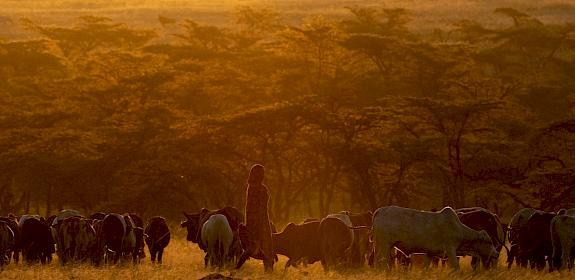Caviar figures smell fishy
Vladivostock, Russia, 8 February 2007—The Convention on International Trade in Endangered Species of Wild Fauna and Flora (CITES) has lifted a one-year ban on exports of caviar from stocks of beluga sturgeon and two species of sturgeon from the Amur River basin. The announcement has dismayed TRAFFIC and WWF who are concerned the decision was not based on catch quotas established by the Russian Federation for 2007. TRAFFIC and WWF are encouraging countries not to import caviar from these sturgeon stocks until the precise scientific and legal basis upon which these quotas were made are clarified.

“Catch quotas for beluga sturgeons and sturgeons from the Amur River have been established for scientific and restocking purposes only, so it is unclear what figures the commercial export quotas from Russian Federation are based upon,” said Alexey Vaisman Senior Programme Officer of the TRAFFIC programme in Russia.
For example, there have been no commercial quotas established for either Kaluga (Huso dauricus) or Amur Sturgeon (Acipenser schrenkii) in recent years, and the catch for scientific purposes was set at 14 and 3 tonnes respectively in 2007. This represents about 1,120 kg of Kaluga caviar and around 300 kg of caviar from the Amur Sturgeon, but the declared export quotas are 2,560 and 1,900 kg. It is also unclear if any of these quotas include caviar harvested or processed in preceding year, which is not allowed under CITES.
TRAFFIC and WWF also noted that the export quotas from the Russian Federation for Russian sturgeon (Acipenser gueldenstaedtii) were increased from 14,000 kg in 2005 to 20,000 this year; however the catch quota (landed weight of the fish) for this species was decreased from 230 tonnes in 2005 to 110 tonnes for 2007. It is believed this significant increase in the export of caviar in 2007 is due to plans to decrease the amount of roe used in hatcheries for artificial reproduction.
“This will be of serious concern for the Russian Sturgeon, which is almost completely dependent on artificial reproduction for its survival,” Vaisman said.
“More than half their spawning grounds are cut off by dams, and the Lower Volga is practically devoid of mature females because of illegal fishing.”
TRAFFIC and WWF are also concerned that the Russian Federation has yet to implement a standard labeling system for its caviar exports. CITES recommends that Parties should not accept shipments of caviar unless they comply with the provisions of its universal labeling system for caviar.
Range States around the Caspian Sea—Azerbaijan, Iran, Kazakhstan, the Russian Federation and Turkmenistan—have agreed a combined export quota of 3,761 kg of beluga caviar in 2007, this is 29% lower than in 2005 when trade in this product was last permitted.
The 2007 export quotas for caviar from the Russian Federation are: Beluga (Huso huso) 700 kg, Russian Sturgeon (Acipenser gueldenstadtii) 20,000 kg (up from 14,000 kg in 2005), Stellate Sturgeon (Acipenser stellatus) 3,500 kg, Kaluga (Huso dauricus) 2,560 and Amur Sturgeon (Acipenser schrenckii) 1,900 kg. All five species are classified by IUCN as Endangered, and CITES has urged all range states to ensure adequate monitoring of stocks, to promote the sustainability of sturgeon and paddlefish fisheries.
Although the levels of trade of Beluga and Amur River sturgeons proposed is lower than those other sturgeon species, they are relatively high considering the small and dwindling populations of these species currently.
“Such high quotas will have a disastrous impact on the survival of these species,” Vaisman warned.
“Each kilo of caviar represents ten kilogrammes of live fish.
“All decisions regarding trade in sturgeon must be based on the most reliable, accurate and up-to-date and scientific information including knowledge of domestic trade levels, wild sturgeon populations, efficiency of restocking programmes and levels of illegal trade.
“Countries should therefore not import sturgeon from these stocks until the Russian Federation further clarify the scientific and legal basis upon which these quotas were made,” Vaisman concluded.




